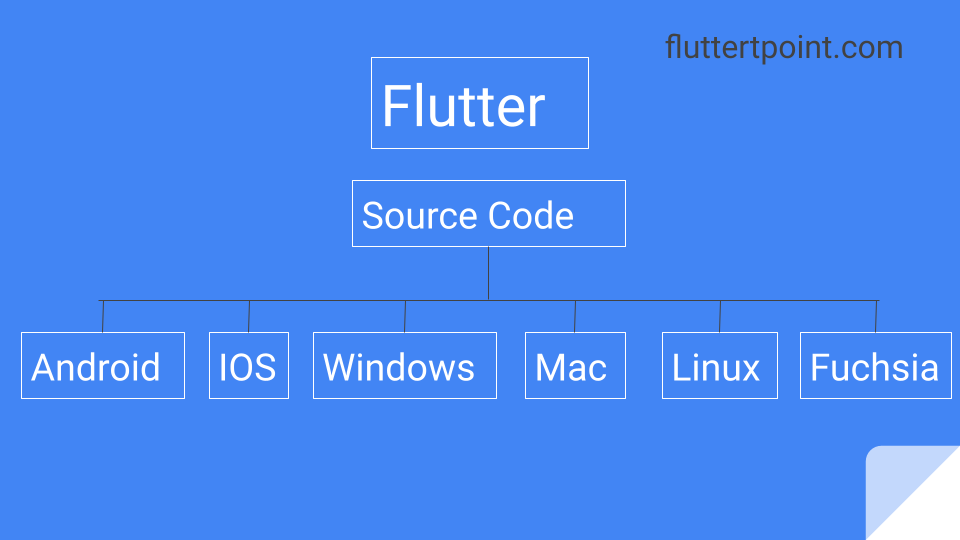Flutter is an open-source software development kit developed by google. It is used to develop android, IOS, windows, mac, Fuchsia and linux apps. It is open source that mean anyone can use this.

What is Flutter?
Flutter was first described in 2015 and released in May 2017. It is written in C, C++, Dart programming languages. We can create android, IOS, windows, linux and Fuchsia app using the flutter.

In the above image you can see that how beneficial the Flutter in modern time. The most important thing is that you can build app for Android, IOS, MAC, Windows, Linux and Fuchsia using only the single source code. You don’t need to do coding for separately for each platform. This is cross platform development UI KIT for developing the applications.
Why Should I Use Flutter
There are many reasons which recommend you to learn and use Flutter. Every software development company wants to earn by giving less time with multiple products. Flutter provides the way to achieve this. Flutter is cross platform development UI KIT. You can create multiple platform apps using this.
Help Community
Google has more than thousands of developer who are regularly working on flutter to provide the best services. You can take help from the following communities.
Most of the developer use GitHub to raise their issues and problems. Its totally free you can create account on GItHub and can share your source code also.
StackOverFlow if also community where developers ask their questions and errors. You can find developers jobs on StackOverFlow also.
What Is Flutter Firebase
Firebase provides the facility to create storage and perform tasks. You can create account and can add your flutter project here. Firebase used to develop live data apps on which the data reflects on the change. You can create push notifications using the firebase also.
Career As Flutter Developer
It is growing day by day and improving its services. So in coming years there will be most of jobs for flutter developer. Companies will hire who can create cross platform apps. So we recommend you to learn flutter and move ahead.
Download Flutter
To create applications using Flutter, First you have to install the requirement development KIT and related softwares. First you have to download and install the Flutter development KIT for specific platform. You can download from here.
Flutter Vs React Native
There are many reason which separate both of these development platforms. React native also very popular and widely used cross platform used to create multi platform applications.
| Flutter | React Native |
|---|---|
| Dart is used for development | JavaScript Is used for development |
| Developed by Google | Developed by Facebook |
| Released in May 2017 | Released in June 2015 |
| Use Business Logic Component | It uses Redux and Flux |
| It uses custom widgets to Create UI | Controllers are used to create UI |
| Performance is fast | Performance is slower than Flutter apps |
| Hot Reload Supported | It also Supported Hot reload |
| Used By Google Ads, Hamilton | FaceBook ads, Instagram, Linkedln |
Thank You for visiting this tutorial. You can comment for any doubt and issue.
